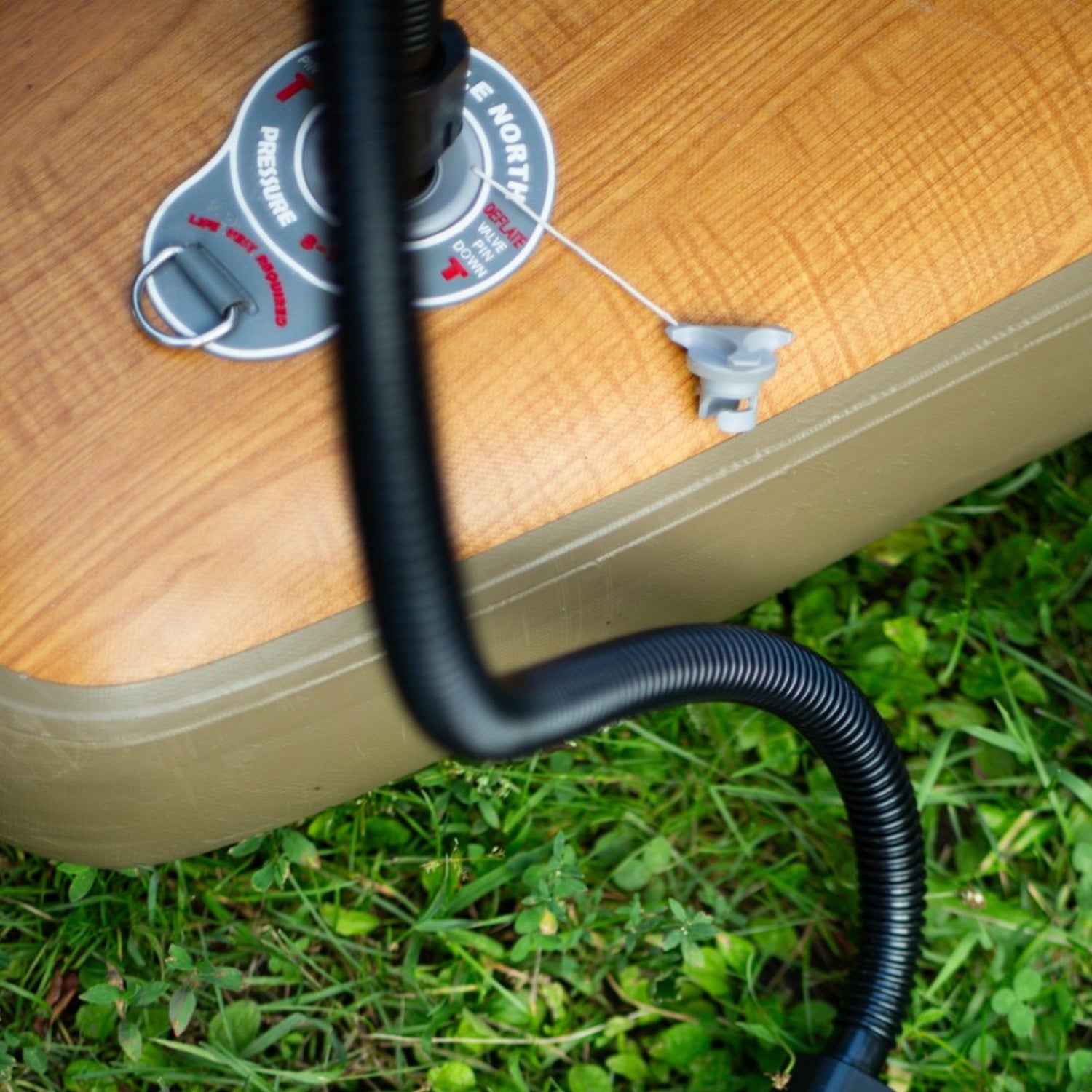Inflatable stand-up paddle boards (iSUPs) are convenient and portable, making them a popular and versatile choice for a variety of paddlers. Whether planning to paddle a serene lake or wrapping up after a day on water, it’s important to know how to properly inflate and deflate your paddle board.
How to Inflate a SUP
Inflating your paddle board correctly ensures optimal performance. A properly inflated, rigid board will be more stable and provide better glide on the water. An under-inflated board will be less stable, and slower, on water. Follow these steps:
- Unroll the Paddle Board: Lay your paddle board on a flat surface, unroll, and ensure the valve is accessible.
- Valve Check: Ensure the valve's pin is in the "up" position to prevent air from escaping when you’re finished inflating.
- Attach the Pump: Connect your pump's hose to the valve securely. Most boards are equipped with a Halkey Roberts valve, requiring you to turn clockwise to lock in place.
- Begin Pumping: Start inflating. The initial phase fills the board with air, and the pressure gauge may not register immediately.
- Monitor PSI: Continue pumping until you reach the target PSI. We recommend a minimum of 10 PSI, although the max is 18 PSI.
- Secure the Valve: Once inflated, quickly detach the pump and close the valve cap tightly.
How Long Does It Take to Inflate a SUP?
The time required to inflate an inflatable paddle board varies based on the pump type, experience, and target PSI.
- Manual Hand Pump: Approximately 4-7 minutes for most users.
-
Electric SUP Pump: Around 7 minutes or less, offering a hands-free experience.
How to Deflate an Inflatable Paddle Board
Proper deflation is crucial for storage and transportation. Here's how to deflate your paddle board:
- Rinse and Dry: Before deflating, rinse your board with fresh water and allow to dry completely before rolling up.
- Open the Valve: Remove the valve cap. Press down on the valve pin. Expect a rush of air as the board deflates.
- Roll the Board: Starting from the nose, roll the board towards the valve, pushing out remaining air.
- Secure for Storage: Once fully deflated, secure the board with straps and place it in its storage bag.
Pro Tip: To minimize noise during deflation, place a towel over the valve before releasing the air.
Mastering the process of inflating and deflating your iSUP enhances your paddling experience and ensures your gear remains in top condition. For more tips and high-quality paddle boards, visit Paddle North.




3 comments
Keith Nettesheim
Hi, I bought the SUP for my girlfriend for Christmas and I believe there may be something wrong with the pump. She pumps and pumps and can’t get over 8 psi. The pump is almost as hard to pull up as it is to push down. Seems like a lot of work to blow this thing up. Please advise;
Thank you
Keith
630-297-1960
Kay
Are your inflatable paddle boards only good on flat water? What about on windy days or choppy water…would the inflatable board still be safe to ride?
karl boettner
I heard there was an electric pump available to purchase?
Leave a comment
All comments are moderated before being published.
This site is protected by hCaptcha and the hCaptcha Privacy Policy and Terms of Service apply.